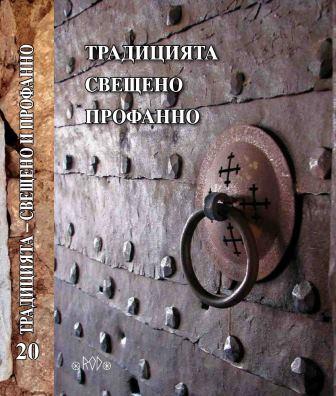ОБРАЗИТЕ НА САКРАЛНОТО И РОДНОТО В ТВОРЧЕСТВОТО НА НАУМ ХАДЖИМЛАДЕНОВ
THE IMAGES OF THE SACRED AND THE NATIVE IN THE WORKS OF NAUM HADZHIMLADENOV (1894–1985)
Author(s): Daniela PetrovaSubject(s): Anthropology, Social Sciences, Visual Arts, Cultural Anthropology / Ethnology, Culture and social structure , Sociology of Art, History of Art
Published by: Асоциация за антропология, етнология и фолклористика ОНГЬЛ
Keywords: History; Art; Art history; Cultural history; Folklore; Religion; Modern art; Bulgarian art; Mythology;
Summary/Abstract: In terms of style aspect, the Bulgarian fine arts from the first two decades of the twentieth century have an extremely diverse character. The different styles and movements appearing on the Bulgarian art scene of- 502 ten put the authors wandering between the motives of the Sacred and the Native. The work of the artist Naum Hadzhimladenov was formed in this ambience. Born in Samokov in 1894 and graduated from the State Academy of Art in 1921 in the class of Prof. Ivan (Jan) Mrkvichka, the young artist became interested in the fashionable at the time styles of representing the motives of the Sacred and the Native, and the connections between them. Even in his early works he was engaged with the questions of good and evil, the answers to which he found in the images of Jesus and Judas. He created many drawings and paintings on biblical themes and with religious motifs from the spiritual life of the Bulgarians – memorial services, prayers, and liturgies. Apart from the sacral-native motives, the search for the Native in the artist’s work develops in two other directions. On the one hand, there are the few works from his student years in which his passions for symbolism and attempts to delve into mythological and fairy-tale plots (“Samodiva”, “Folk Song”, “Shepherd and Samodivi (fairies from the Bulgarian folklore)” are clearly visible. On the other hand are his paintings, representing the life of the Samokov people (“The old Fountain”, “Market in Samokov”, “Wedding”). By the end of the 1940s, the drama in his religious paintings would be replaced, with a new look of irony at the characters. In the 50’s and 60’s among its plots will appear cafes, nativity scenes, circus performances. The search for the Native will never interested him again, and the Sacred will become comic. At the age of 91, Naum Hadzhimladenov passed away, leaving behind a huge work and a rich array of archival materials. Still poorly researched and unknown to the general public, Hadzhimladenov has found his own place in the history of Bulgarian art.
Journal: Годишник на Асоциация за антропология, етнология и фолклористика »Онгъл«
- Issue Year: 2021
- Issue No: 20
- Page Range: 492-502
- Page Count: 11
- Language: Bulgarian
- Content File-PDF

